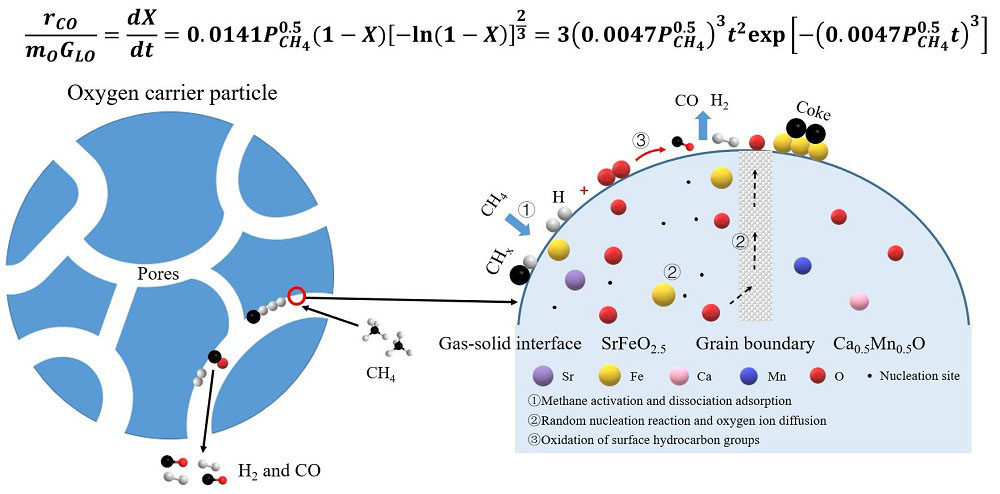As a novel and efficient transformation route, chemical-looping reforming of methane (CLRM), which uses a redox material that not only activates a stable C–H bond of CH
4 (bond energy of 438.8 kJ∙mol
‒1) but also provides oxygen species that combine with carbon atoms [
2,
17], has attracted tremendous attentions in recent years [
18,
19]. Mixed metal oxides and perovskites have been intensively investigated as redox materials [
20,
21], because they prefer C–H activation. AFeO
3−δ (A = La, Eu or Sr) perovskites have exhibited high activity toward methane partial oxidation [
21–
23], the main reaction in the reduction step of CLRM. Among these perovskites, LaFeO
3 and SrFeO
3−δ exhibit nearly 90% and 100% syngas selectivity at 900 and 980 °C, respectively [
15,
21]. These findings have further encouraged studies on perovskites as the redox materials for CLRM. Specifically, SrFeO
3−δ is one of the most attractive candidate materials because it is cheap, readily available, and easily tunable [
24–
26]. To further enhance its redox performance, several strategies have been explored, such as anchoring or depositing it on another material [
27,
28]. Li et al. [
29] prepared a nanocomposite composed of SrFeO
3−δ as the active phase and CaO as the dispersing medium, and found that methane conversion and syngas selectivity reached 90% and 89% at 980 °C, respectively, and CaO phase significantly enhanced both the redox kinetics and the cyclability. The composition-performance relationship of nanocomposites and the effect of dispersing medium were further investigated [
15]. In the reduction step, the nanocomposite containing 10 wt % SrFeO
3−δ exhibited the highest CH
4 conversion (88%) and syngas production rate (1.8 mol∙kg
SFO−1∙min
−1), but the one containing 80 wt % SrFeO
3−δ showed the highest syngas productivity (27.3 mol∙kg
SFO−1). Besides, MnO and CaO∙MnO were also investigated as the dispersing medium [
30]. Among these three nanocomposites, SrFeO
3−δ–CaO∙MnO (SF–CM) exhibited the maximum instantaneous CH
4 conversion (66.2%) and syngas selectivity (91.5%) at 900 °C.









